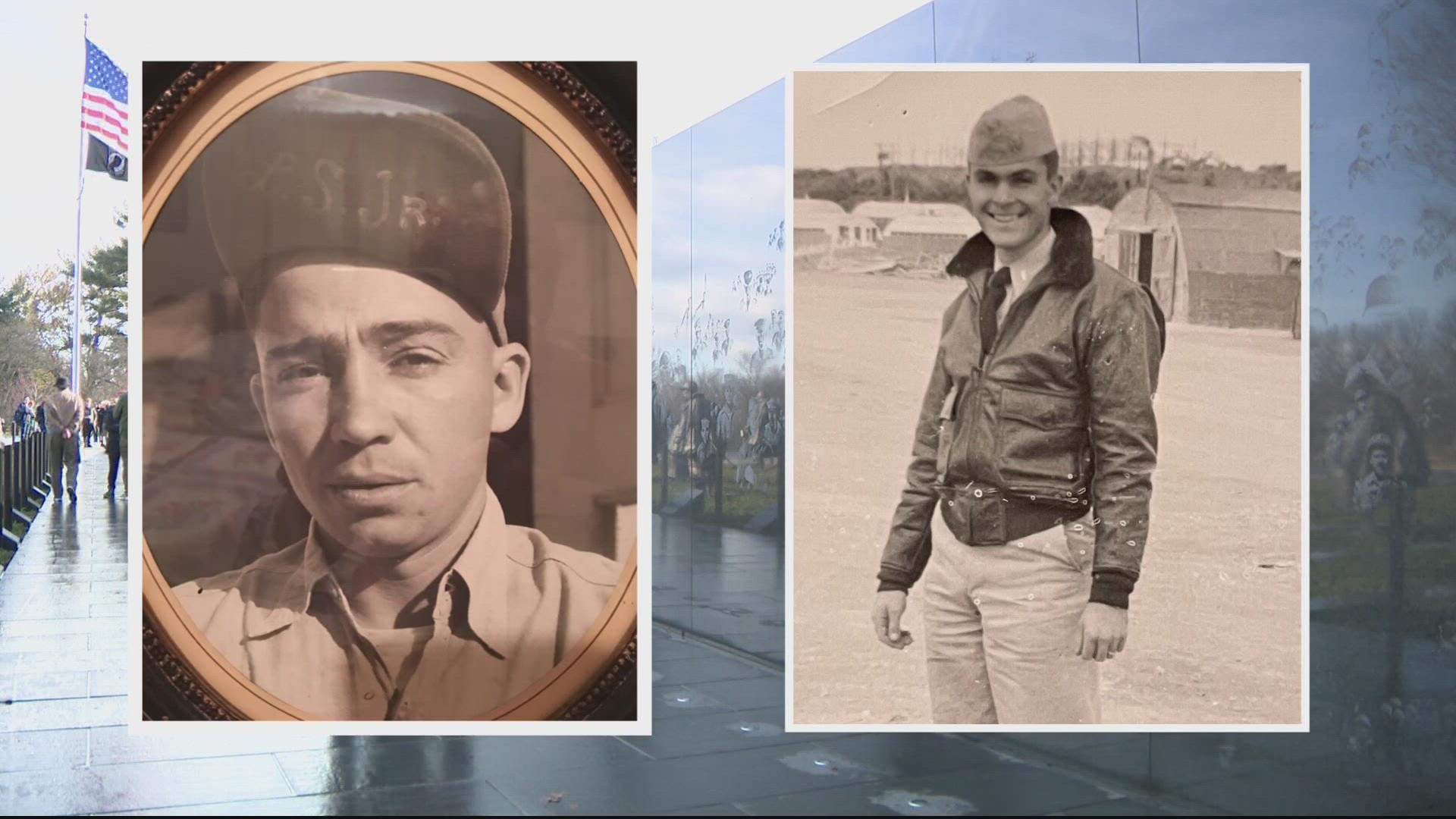WASHINGTON — Megan Marx and Terri Mumley may live in two different states, but they consider themselves sisters. Their quest to officially recognize their relatives as casualties of the Korean War created an unbreakable bond.
Both women are in the District to remember the lives of 11 service members of the United States Navy and the United States Coast Guard who went missing in action 70 years ago during the Korean War. Among them were the first husband of Marx’s mother, Navy Ensign Dwight C. Angell, and Mumley’s grandfather, Lloyd Smith, Jr. Their Navy reconnaissance plane was shot down off the coast of China.
“It's important to remember them because these men never came home,” Marx said. “For us, there isn't a tombstone, there isn't any closure, and it's kind of we're leaving them there.”
They read each name out loud next to the Wall of Remembrance at the Korean War Veterans Memorial, even though they were never included.
The $22 million wall, which opened last summer, etched more than 36,000 American servicemen names and more than 7,200 members of the Korean Augmentation to the United States Army who died defending South Korea.
Marx and Mumley said they were told for years that their names are omitted from the official list of Korean War casualties because the shootdown happened outside the combat zone and ultimately were considered “Cold War” casualties.
They attended the ceremony to unveil the memorial even though they knew the names were not engraved.
“It's heartbreaking because they fought for their country, and the Department of Defense should be the ones to understand the most, but they don't,” Mumley said.
The ladies plan on handing a letter to the U.S. Senate Committee on Armed Services to start an investigation.
“Unfortunately, we have been left in limbo on this matter by the Department of Defense and have come to learn that compiling an accurate list of names of US service member casualties and losses in the Korean War is a significant challenge for many reasons,” the letter read.
However, other families have complained about other issues including misspellings on the wall.
The New York Times first reported about the potential misspellings of more than 400 names, according to families and researchers Hal and Ted Barker of Texas, who compiled data about the casualties through the Korean War Project.
“It's like how many different ways can you hurt people in putting this together?” Marx asked. “For this wall to be corrected, the whole thing needs to be taken down.”
“I just think it's a lack of oversight and not checking what they were using,” Mumley added. “They were using old lists and old punch card lists.”
In a statement to WUSA9, a Pentagon spokesperson said, “The errors are a very unfortunate mistake and the DOD is working in tandem with the Dept. of Interior to correct those mistakes.”
“We are also aware that some names are on the Wall of Remembrance which were not included on the Department’s final list of Korean War casualties,” Army Maj. Charlie Dietz added. “The respective Military Departments reviewed every name on the Korean War Casualty List for correctness against available official military records. Though not common, the official records themselves may have contained errors making this review challenging. Additionally challenging was determining if a deceased service member that was previously considered a Cold War era loss should be re-categorized as a Korean War loss. We encourage all family members or concerned citizens to notify the Department of any names that were omitted, misspelled, or included in error.”

